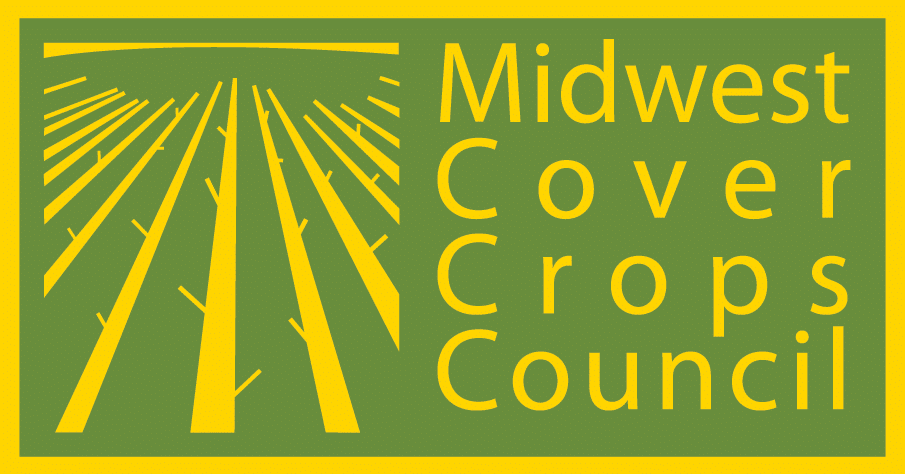Cover crops remain tricky to fit into annual crop rotations in Minnesota, but windows after canning crops, silage, and small grains allow for robust growth. Growers are also experimenting with interseeding cover crops into standing corn and soybean crops to get a longer growing season. The Minnesota Office for Soil Health (MOSH) has a survey of relevant cover crop research available, while practical tips for implementation can be found with the University of Minnesota Extension as well as partners with Soil and Water Conservation Districts and the Natural Resources Conservation Service statewide. Ongoing research and demonstration work includes cover crops with low-disturbance manure systems, cover crop economics, cover crops in wide-row corn, and early summer (prevent plant) cover crop species trials.
Cover Crop Recipes
RECIPE – POST CORN, GOING TO SOYBEAN: USE CEREAL RYE
Since the dominant cropping system in Minnesota is the two-year corn-soybean rotation, this recipe provides an introductory approach for integrating a cereal rye cover crop into the corn year of the rotation.
RECIPE – POST SOYBEAN, GOING TO CORN: USE OATS
Planting a cover crop after small grains, a canning crop, or corn silage will often provide a wider window for establishment before a killing freeze.
Recipe – Post Canning Crops: Use Oats with Radish
Cover crops following canning crops will protect soil from erosion and improve soil structure after heavy harvesting equipment is used to take off the canning crop.
Recipe – Post Corn Silage, Going to Corn: Use Cereal Rye
This recipe provides an introductory approach for integrating a cereal rye cover crop after corn silage harvest and before corn for grain or silage.
Recipe – Post Corn Silage, Going to Soybean: Use Cereal Rye
This recipe provides an introductory approach for integrating a cereal rye cover crop into a corn silage–soybean rotation.
Additional Resources
Various agencies provide cover crop services at a local level. These resources can help with technical support and answer questions from a local perspective at no cost.
- Minnesota Natural Resources Conservation Service (NRCS)
- University of Minnesota Extension
- Minnesota Association of Soil and Water Conservation Districts (MASWCD)
- University of Minnesota Extension - Cover Crops
- Minnesota Office for Soil Health - MOSH
Feel free to contact your MCCC state representative for local questions and recommendations. Your MCCC state representative's contact information can be found on the State Contacts tab.
MCCC STATE CONTACT
Anna Cates
Assistant Extension Professor
catesa@umn.edu
612-625-3135
S225 Soils Building
1529 Gortner Ave
St Paul, MN 55108
United States
OTHER CONTACTS
Julie Grossman
Assistant Professor- University of Minnesota
454 Alderman Hall
1970 Fowell Ave.
St. Paul, MN 55108
Phone: 612-625-8597
E-mail: gross025@umn.edu
Lizabeth Stahl, CPAg/CCA
Extension Educator - Crops
Worthington Regional Extension Office
1527 Prairie Drive
Worthington, MN 56187
University of Minnesota
stah0012@umn.edu
507-372-3900, ext. 3912
Troy Salzer
Extension Educator
University of Minnesota Extension
St Louis County
Government Service Center
201 South 3rd Ave W
Virginia, MN 55792
salze003@umn.edu
o. 218-749-7120
Axel Garcia y Garcia
Associate Professor, Department of Agronomy & Plant Genetics
Sustainable Cropping Systems Specialist, UMN Extension
axel@umn.edu
507-752-5080
23669 130th St
Lamberton, MN 56152
United States
Nathan Drewitz
Assistant Extension Professor
Center for Agriculture, Food and Natural Resources
ndrewitz@umn.edu
Donald l. Wyse, Ph.D.
Professor- University of Minnesota
Department of Agronomy and Plant Genetics
411 Borlaug Hall
1991 Upper Buford Circle
St. Paul, MN 55108
Phone: 651-625-1268
E-mail: wysex001@umn.edu
Stephanie McLain
Soil Health Specialist for Minnesota
Natural Resource Conservation Service
Cell: 507-500-1301
MCCC State Reports for Annual Meetings
2020 Minnesota State Report - MCCC Annual Meeting
2019 Minnesota State Report - MCCC Annual Meeting
2018 Minnesota State Report - MCCC Annual Meeting
2016 Minnesota State Report- MCCC Annual Meeting
2015 Minnesota State Report- MCCC Annual Meeting
